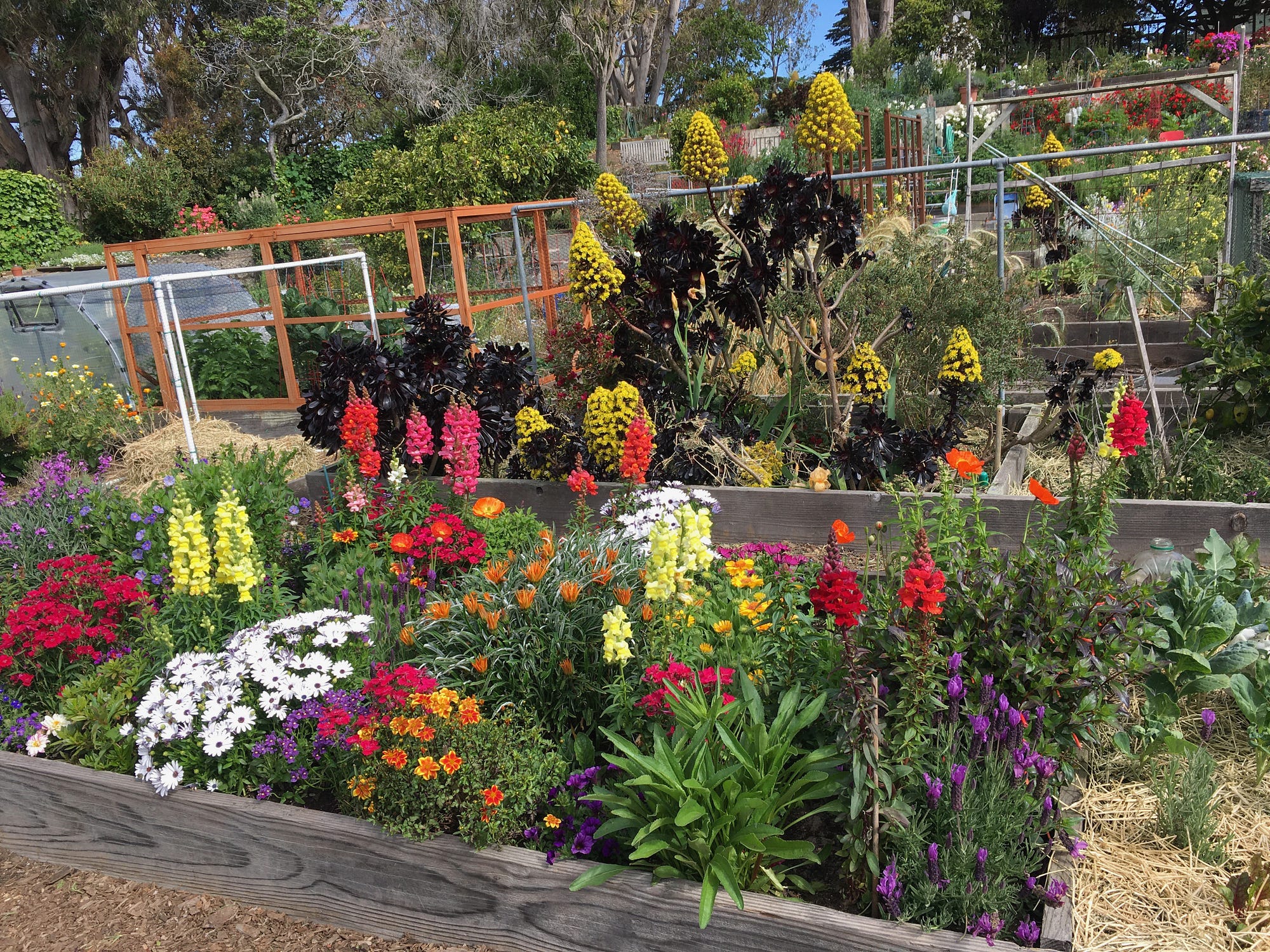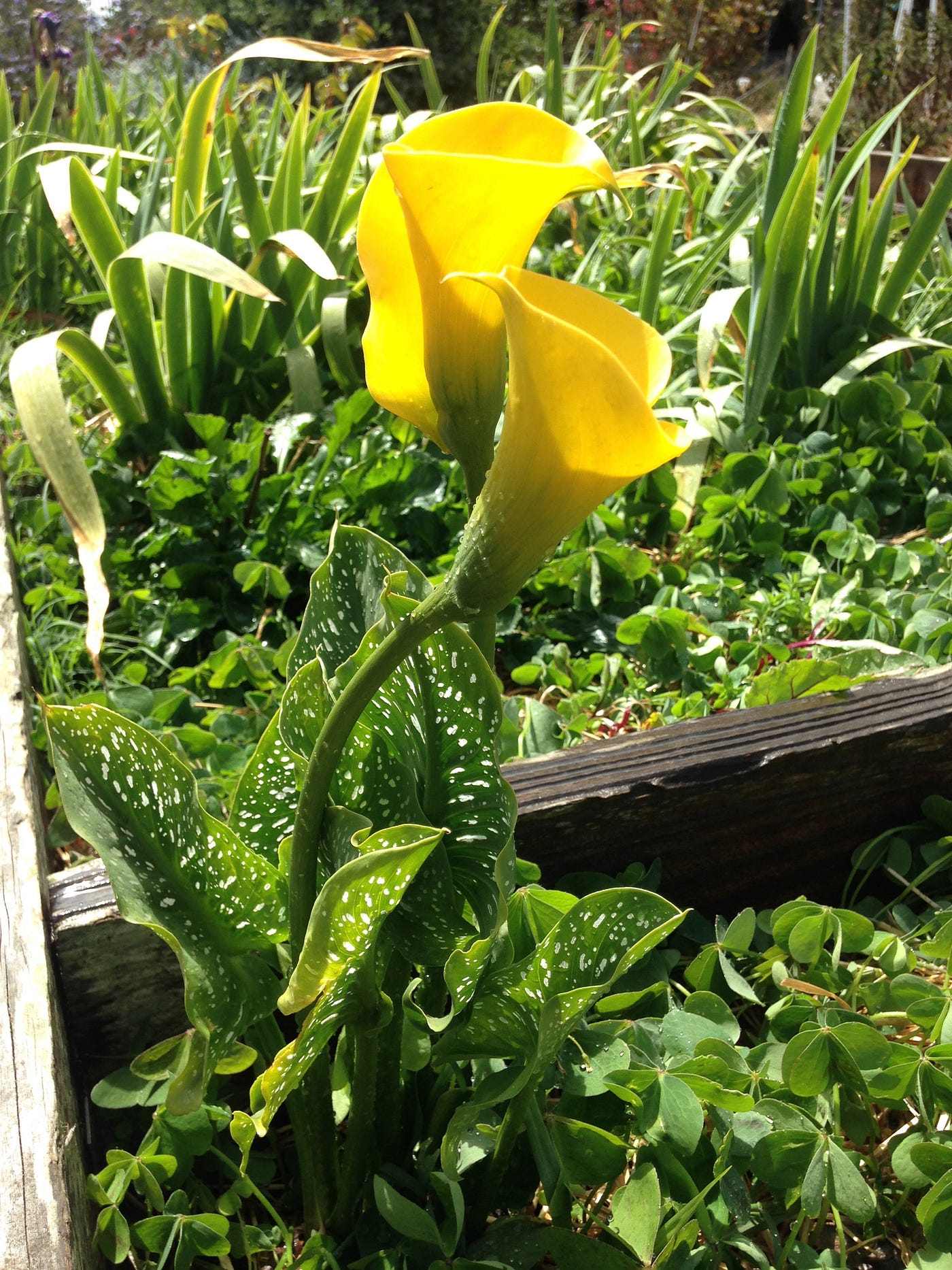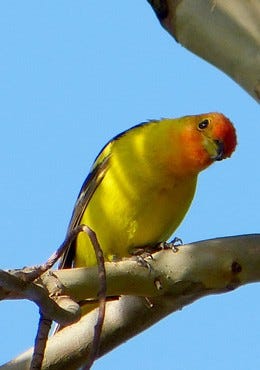
I feed on solitude the way bees feed on nectar. It’s my energy recharger, my soul-sustaining nutrient. Even living in a dense city, I can find a favorite sanctuary of mine less than a mile from home. I share it with the bees, butterflies, birds, other denizens of nature, and fellow solitaries.
The first time I stepped through the gate to the Fort Mason Community Gardens, it felt as if an invisible capsule descended and I was pneumatically transported to an Edenic paradise.
A greenhouse for my seedling thoughts and tender aspirations.
I put my name on a waiting list and became a garden member with plot #78. Some twenty years later, the magic endures. Even the ruckus on the nearby Great Meadow ceases when I enter the fertile gardens. Perhaps the visual displays and earthy fragrances command attention to the dimming of other senses.
The Fort Mason Community Gardens hunker discreetly between the National Park Service Headquarters and Fisherman’s Wharf Hostel. They were once grassy dunes that were first cultivated in the 1970s, post-Vietnam War, when military bases were, in peacenik speak, turning their swords into plowshares, and their spears into pruning hooks—and in modern speak, their posts into national parkland.
My rule of (not-very-green) thumb: I grow what thrives on neglect.
National park means all are welcome. Yet, many pass the garden gates many times before discovering this oasis of nature, serenity, birds, showy plants and flowers, edibles, and more. Although the crops are not for public harvesting, it’s impressive to witness how much diversity grows in foggy San Francisco. Dark leafy greens love the chill, but even Mediterranean crops—some breeds of tomatoes, artichokes, peppers, beans, and lemons—thrive.

My plot is one of the more humble ones. My rule of (not-very-green) thumb: I grow what thrives on neglect. Long ago, I heard about Masanobu Fukuoka’s One-Straw Revolution, also called “do-nothing farming.” Simply stated, Fukuoka inspires me to not overly weed the oxalis (wood sorrel), an edible clover, whose persistence bedevils my fellow gardeners and occasionally earns me the stink eye for allowing it to stay. But my roses, irises, calla lilies, alstroemeria (Peruvian lilies), geraniums, naked ladies, and a few flowers whose names I know not, co-exist peacefully with the so-called weed. I do pull up the crabgrass when its tentacles sneak inside my plot. They always return.
I’m at peace with the endless chore of weeding, watching what survives, and the seasonal changes in a city with relatively subtle ones. The cyclical nature of gardening reminds me that linear time is a mere illusion.
Today Fort Mason supports more than a hundred plots maintained by members. The only time you’ll see a crowd in the gardens is on workdays, which come four times a year. Anyone, a member or not, is welcome to join in the work. It’s social and botanically informative. In non-pandemic times, barbecue lunch is served at noon (for a $10 fee) when garden business is discussed.
Serious bird lovers know the gardens as an oasis for feathered species.
Those who are familiar with the area’s best-kept secret avail themselves of the wooden picnic tables, barbecue, and paths through terraced gardens, including one of my favorites, the California natives section. Stone or iron benches nestle in the luxurious vegetation of commons areas, inviting contemplative sitting and quiet meditation. My bench for morning yoga faces one of the most prolific plots.
The bees and I love it.
Nannies in the know bring their charges to the gardens, others enjoy happy hour with a bottle of wine poured into their own stemware. Despite its proximity to the busy Great Meadow, the gardens are never crowded, aside from workdays.
No one has ever foiled my solitude. There is beauty and space for all. Monet had his Giverny near Paris. We solitaries, which includes birders and photographers, have Fort Mason Gardens. How many telephoto lenses have captured the intimate details of a rainbow coalition of ornamentals?

Serious bird lovers know the gardens as an oasis for feathered species. I have often spotted the red-shouldered hawk in a tall eucalyptus tree. House finches are common. Occasionally a Western tanager, with its yellow, red and black plumage is seen. The squawky parrots of Telegraph Hill perch on a corner of the national park offices. Months ago, an uncommon visitor, a southern red bishop was a siren call for birders and photographers for days on end. The breeding male, described as “a small, dumpy sparrow-like weaver,” was decked in his velvety vermilion and black.

Last year, a red fox found her way to the gardens and decided they were a perfect place to hang out for a while. Photographer Sarah Sekaran captured some images of the sleek animal. Like me and other solitude seekers, the fox knew that inside those wooden gates one finds a rare protected space, soft asylum from the noise and haste, the roar of the crowds.

If you’d like to get on the long waiting list for a plot at Fort Mason, apply at this link, where you can also apply to any of San Francisco’s forty-two community gardens.
Sign up for The Bold Italic newsletter to get the best of the Bay Area in your inbox every week.







